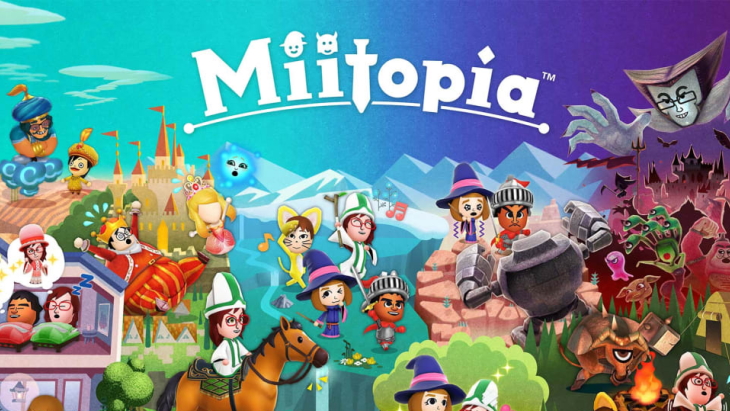
The humble Mii was born on the Nintendo Wii, but took off thanks the Nintendo 3DS camera allowing you to convert friends and photos into the dull-eyed creatures. Smash Bros. allowed them to be dressed up and smack seven-bells out of video game icons, but it was the most creative faces shared online that was the Mii’s claim to fame.
2014’s Tomadachi Life had players populate a small island with their Miis, letting them get up to weird and wonderful high-jinx, and creating stories and lore for each player. That game likely led to Miitopia, an RPG where your Miis can be cast as every playable character, NPC, and boss.
Nintendo want another go, bringing the game to the Nintendo Switch. A demo has given everyone a taste of what they can expect; so how was it? Is Miitopia shaping up to be the face of enhanced ports? Or will fail to improve upon the original?

The land of Miitopia is a peaceful one, right up until The Dark Lord begins to steal people’s faces and planting them onto monsters. This leaves them as soulless husks, while the monsters use their newfound features for terrible powers. While fleeing from these photo-fit fiends, the main character answers the call to adventure.
Alongside banter with suspiciously British sounding NPCs, players enter what could be generously called small dungeons. These involve a straight path with the odd branching route, populated with the odd event, treasure chest, and monsters on it. The most damning part of the original seems to have returned; you only control your main character.
Players can choose to attack, use a special skill based on the class, or eat a snack as the main character. That’s it. While you will (if this sticks to the original) eventually see every main class in action (the main character can have three for themselves)- you cannot dictate what your allies will do in battle.
For the most part, ally AI seems competent enough for what’s on offer. You may get the odd moment of a Cleric healing themselves over an ally with less health, or the Pop Star choosing to whack foes over casting a buff. A character’s personality can also cause RNG passive effects, such as a Stubborn character ignoring a status effect, or an Energetic one keeping 1 HP on a lethal hit.
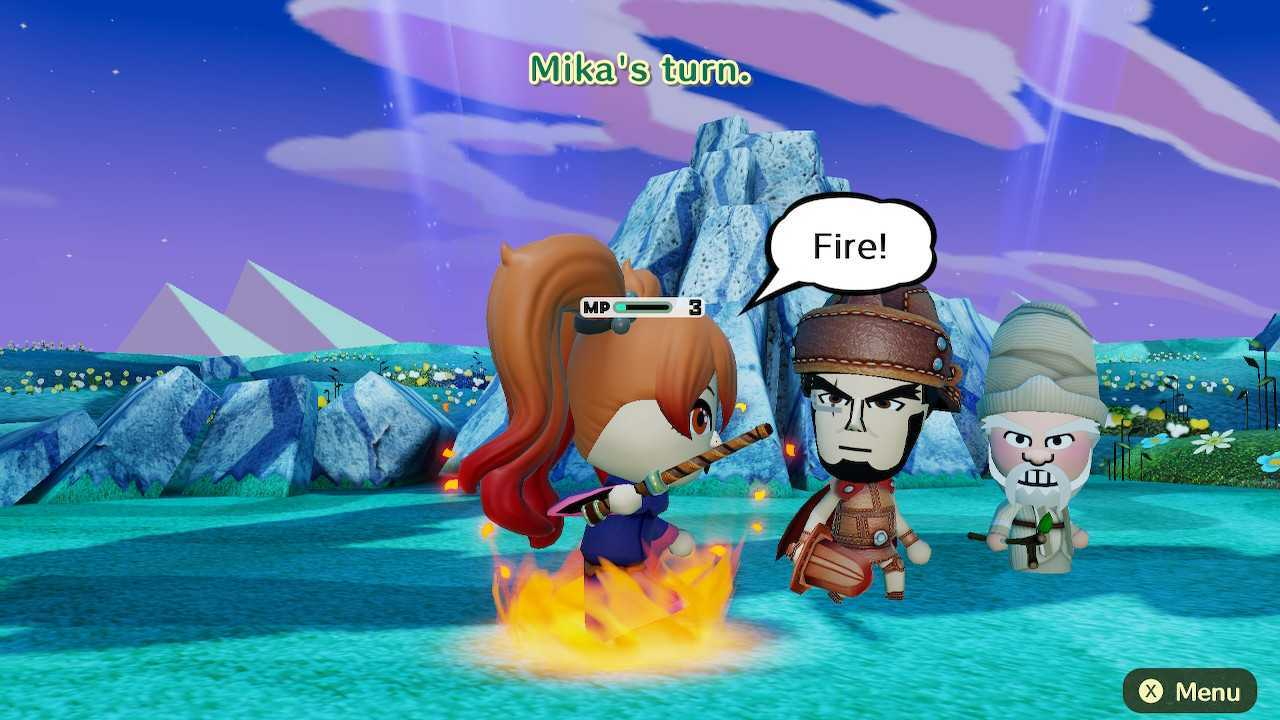
Attempting to evoke the bottom screen of the original, players can bring up a menu at nearly any point to interrupt the action. This menu allows the use of HP and MP sprinkles; a limited resource per-stage that heals only one or two points per shake. Other than this, snacks, and spells; players can also move their characters to a Safe Space.
This takes them out of the fight, but allows them to heal gradually, and recover from status effects quicker. It is used more for the latter, as the damage output lost and increased focus on the other characters in battle prevent it from being too powerful.
On paper this sounds like it should be dull as ditch-water, especially when waiting to watch your characters walk to the next event (or at best, sprint). Yet it is incredibly moreish. You steadily unlock new stages (even if they might as well be identical), and can replay them to level-up new party members quickly, and complete those branching paths for loot.
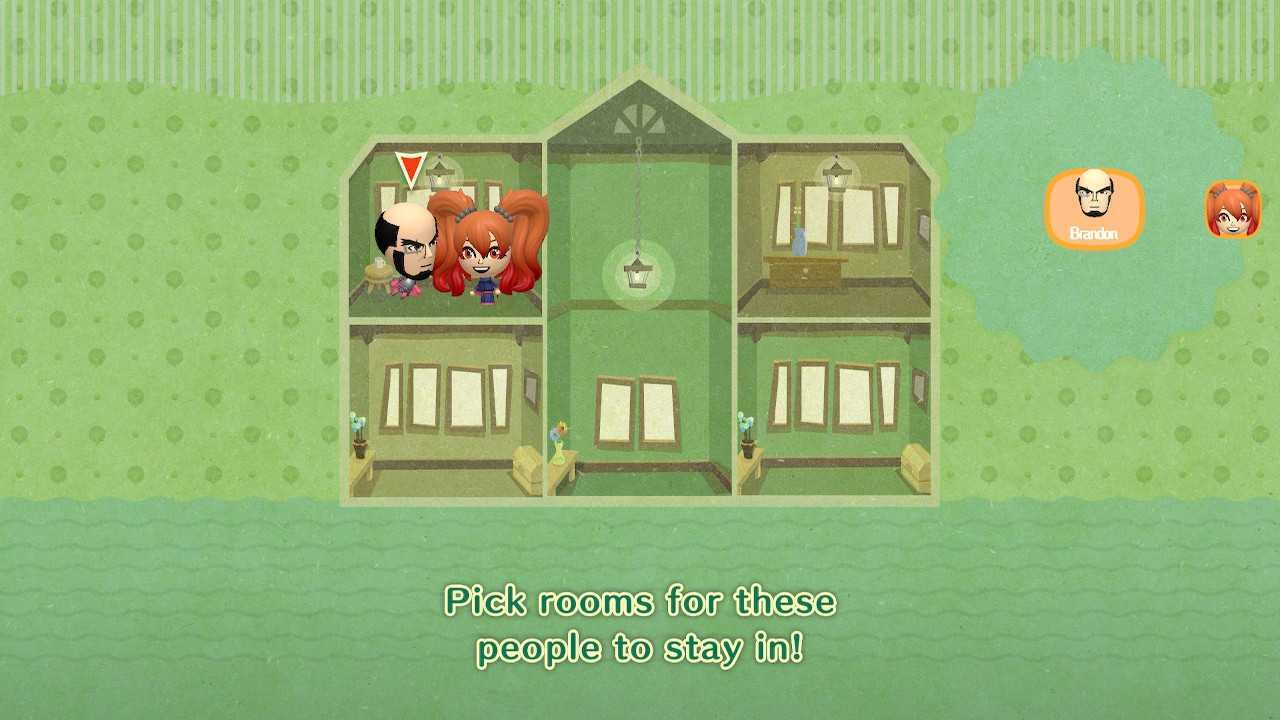
The reason for this urge to play one more stage may be born of Inns. When completing a stage, the party tucks in for a good night’s sleep. The next morning (or from the overworld) you can then have them feed, spend, and hang out.
Enemies drop food, which can be fed to your characters to boost their stats. Each have their likes and dislikes, which means the grub can cause a greater or lesser boost. It can be infuriating to find your Mage does not want to eat the food that raises its Magic or MP- but this seems to be based on the type of food, rather than the stat.
Much like the combat, there’s also little variety in how everyone is armed. Characters will occasionally ask for some pocket money to go out and buy snacks (to heal their HP or MP in battle), or new weapons or armor for a straight increase in attack or defense.
You will not always have the money for the next tier of gear unless you grind; which can give you a choice between stockpiling healing items, or having your characters hit or survive a little better. Snacks and gear can be found in treasure chests during stages (along with money), and can only be looted one time.
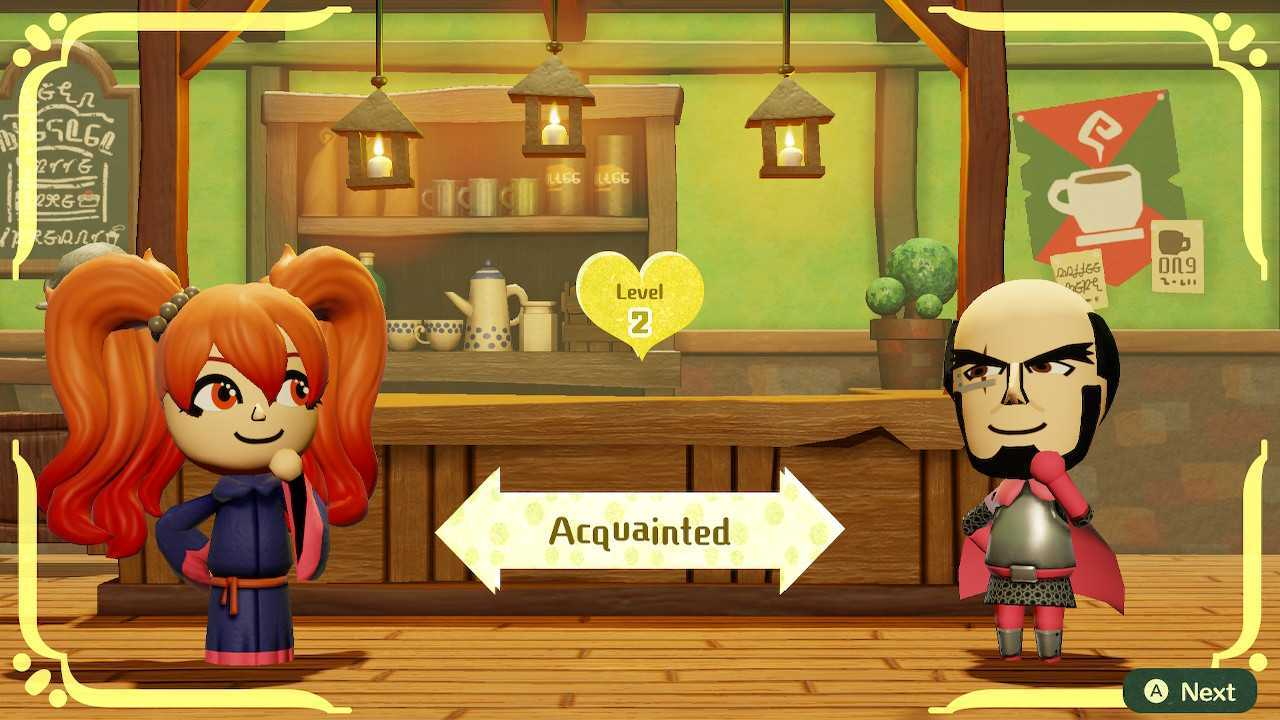
Finally, Inns allow characters to grow closer to one another. As characters become better friends, they unlock passive abilities- such as warning each other to help them dodge enemy attacks, or power up their attack to show off. The a new horse ally acts as another source of this, but only acts when these passives trigger.
However, even the best of friends can sometimes fight, and jealousy can spring up. These tiffs usually hinder, but can sometimes drag enemies into their trouble for more damage. These arguments will end eventually however, and add another element of randomization and “emergent story telling.” In other words, shit goes wrong and you should find it funny, right?
Miis grow closer as they spend the night in the same room, or go out on Outings as players find tickets. These totally-only-friendship dates have various funny skits, even at the same location with the same Miis and personalities. It helps those who are falling behind in the friendship department catch up, to create more funny scenarios in battle and on these trips.
All of the above means your characters will tell a different story to others, even on an individual class basis. Is your Warrior more into tanking or spanking? Is your Thief slicing through foes, or is he too busy being jealous towards how close the Chef and Mage are after they talked about their crushes? Did you beat that last boss easily, or did the mushrooms cause a laughing fit on a Mii based on someone straight-faced?
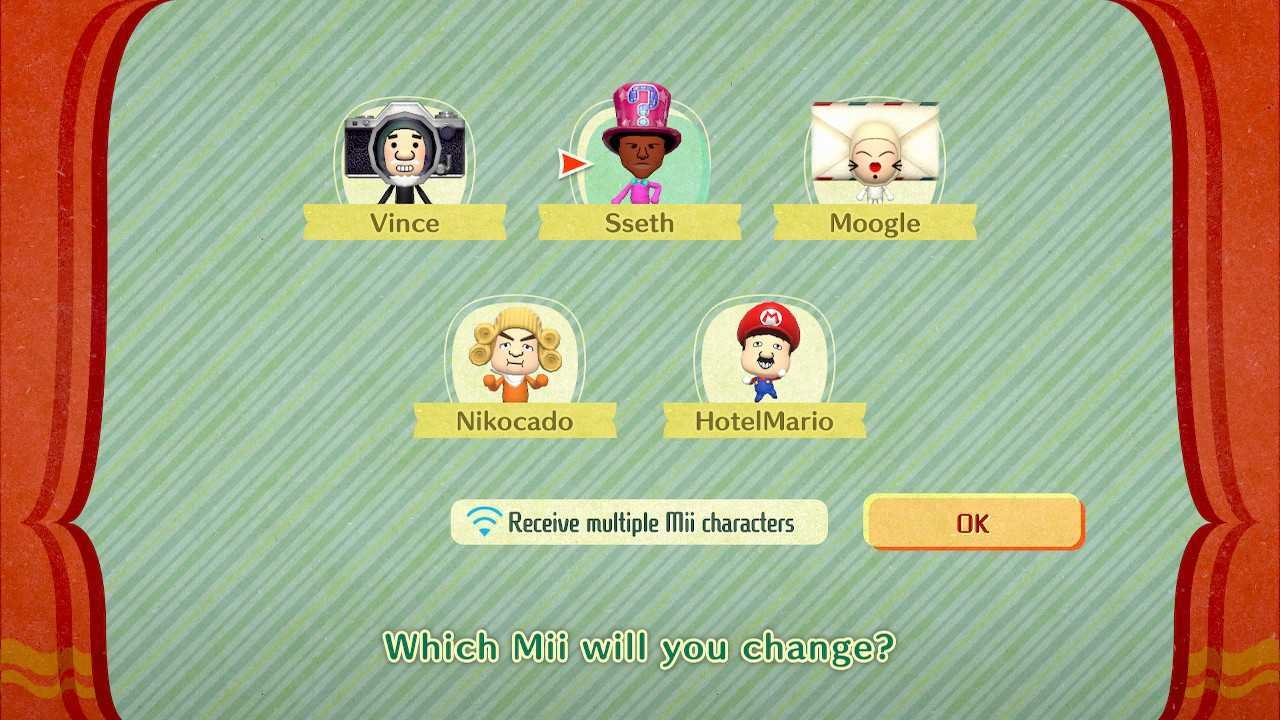
It’s these madcap situations that are the game’s core appeal. Just before new characters are introduced, the player must choose Miis to represent them. Players can connect online to choose popular Miis others have made, their own already stored on the Nintendo Switch, made from scratch there and then, or from the original Miitopia.
On paper it sounds like it shouldn’t work, but it’s hard not to crack a smile when the heavens align for the perfect casting or miscasting. One minor gripe is you can’t change the gender of the NPCs. Four years and needing to make new models anyway, it seemed a missed opportunity not to let players have “The Dark Lady,” or avoid the rare moment a minor character uses the wrong pronouns.
What is a greater annoyance is how quick and easy access to everyone else’s creations requires an online subscription. If you’re already paying for one it’s a non-issue; otherwise those who just want to get on with the game have to work on making their own Miis for the roles, or stick to defaults in a game sorely lacking challenge or control.
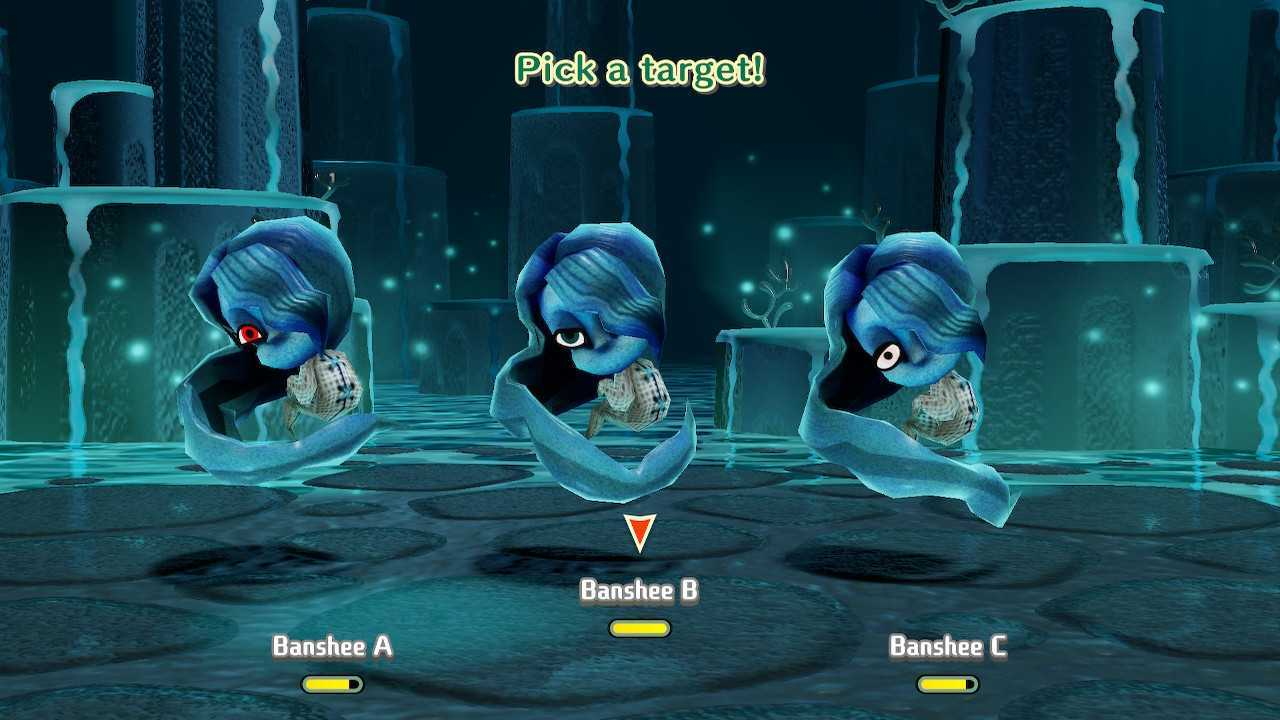
If you do not enjoy the appeal of mad libs, then the core RPG gameplay is extremely basic. It seems as long as you buy gear and snacks when you can, and manage your sprinkles, you’ll be able to handle what’s thrown at you. Combined with the lack of control, some players are going to be instantly turned off.
Even if you could skip straight to the next event in stages, the game’s appeal is as a casual RPG, as was the original. The port seems to be extremely faithful to the original, complete with keeping the “Are you sure you want to keep playing?” messages popular from the time.
Some more meat on the bone would have been appreciated, such as multiple save-files should you wish to play through with a new cast, or different main character class. So, are the Miis enough appeal if you want something more, or you played the original?
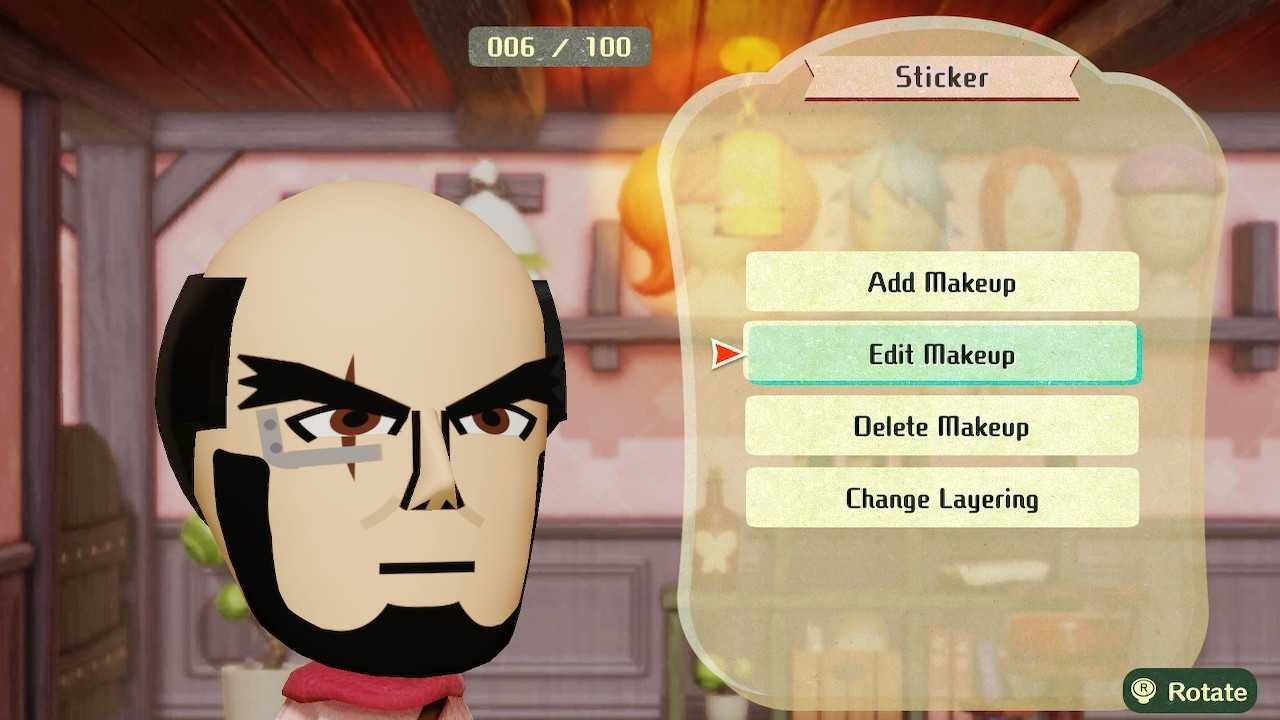
The new and improved Mii editor via Makeup is a two sided coin. Players now have access to numerous shapes and basic pictures (scars, eyelashes, face masks, and so on) to alter their Mii. You can add small light reflections in their eyes, and it’s amazing how much even small details like that give the Mii so much more soul.
Details added to the eyes and mouth vanish when they close and shouldn’t be seen, or stick to where they should when they open. You can even rewatch battles and cutscenes if you decide to update or re-cast your Miis later, which is something I suspect many will do for one-off video clips of a boss introduction.
The downside is that the editor is clunky. Everything is in its own sub-menu; like rotation, size, and movement. Each sticker must be moved individually (except eye objects which are paired and can be split). While you have a much wider pallet of colors, you can’t pick one from an existing piece of makeup, or save it for use on other parts.
All that aside; holy crap people have made some amazing things. If someone has a vision they will get Sisyphus’ boulder to the top of the hill, and what the community have made in such a short time is outstanding.
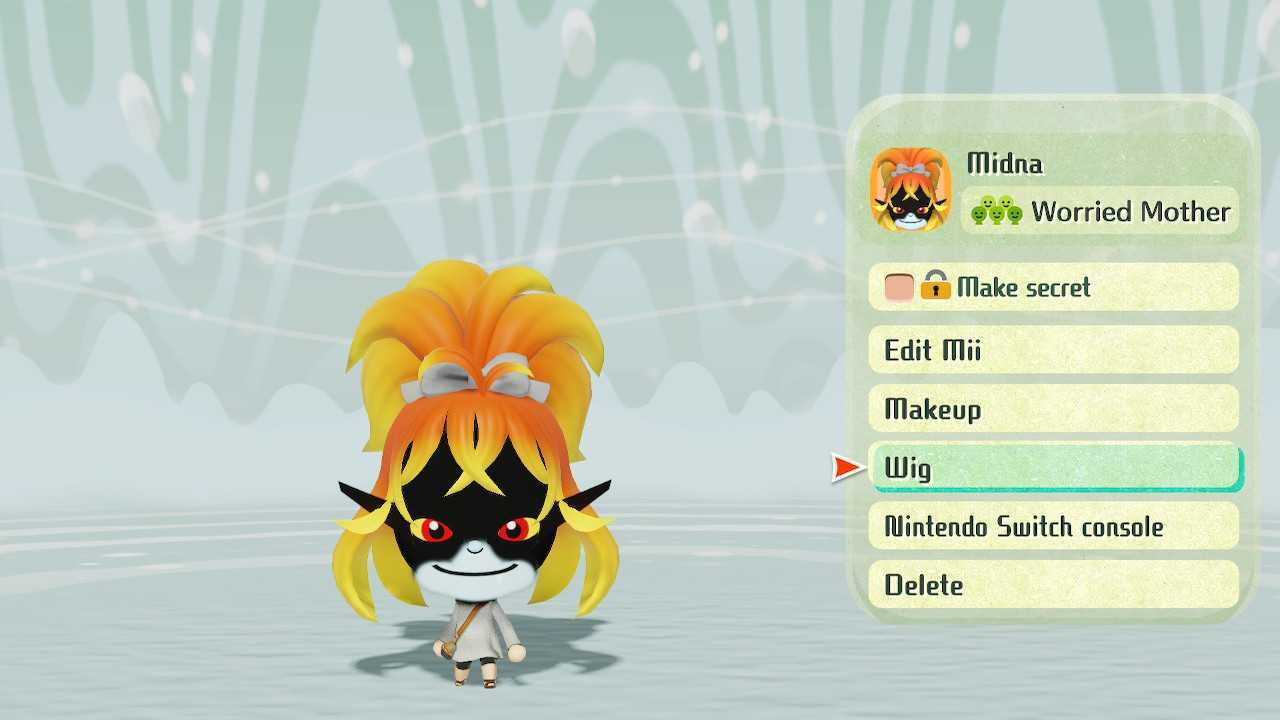
You may have to utilize shapes to cut out parts of others to get exactly what you want at times, and you’ll need to experiment with different categories and layers; but if you put the effort in, you can make almost anything.
Nintendo have seemingly even acknowledged that players may have used unorthodox methods to give Miis features such as fangs or horns. As such, players can freely edit their base Mii, with no alternation to the original unless they want it. Now, you can put down fangs, cat ears, whiskers; the whole shebang. All without losing face. Or using eyes for horns.
Players also have access to wigs with delightful jiggle-physics. While most of these cater to female characters (seriously, where are the beards?) players can have access to new fancy hair-styles that can even be made two-tone.
Each wig also has different bangs and backs to mix and match, along with the odd cowlick. Though even if it should be able to poke out from under a hat, you must choose between the class head gear or the wig.
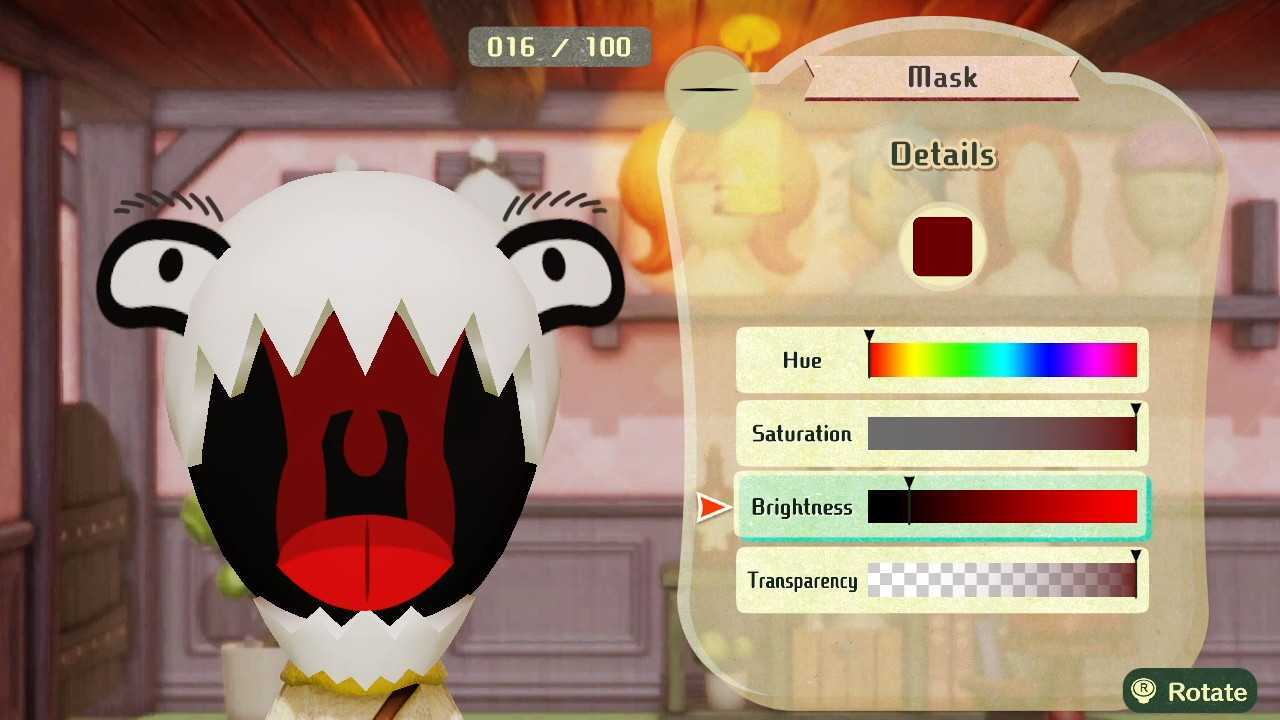
The only other downside to the Makeup editor is how NPCs are handled. When you cast a playable character, you can do Makeup at pretty much any time. For NPCs, you have to do it not just outside of towns; but on the main menu, outside the save file.
If you want your NPCs to be in tip-top appearance, you have to quit out of the game and spend far too long making them look pretty. Even if you only want to do a small edit and slap some stars in their eyes, it takes up time.
While clearly catered to the creatives, they have managed to get over every hurdle before them. But even they may feel the stop-and-start is so annoying they’re better off picking up the rest of the internet’s hard work.
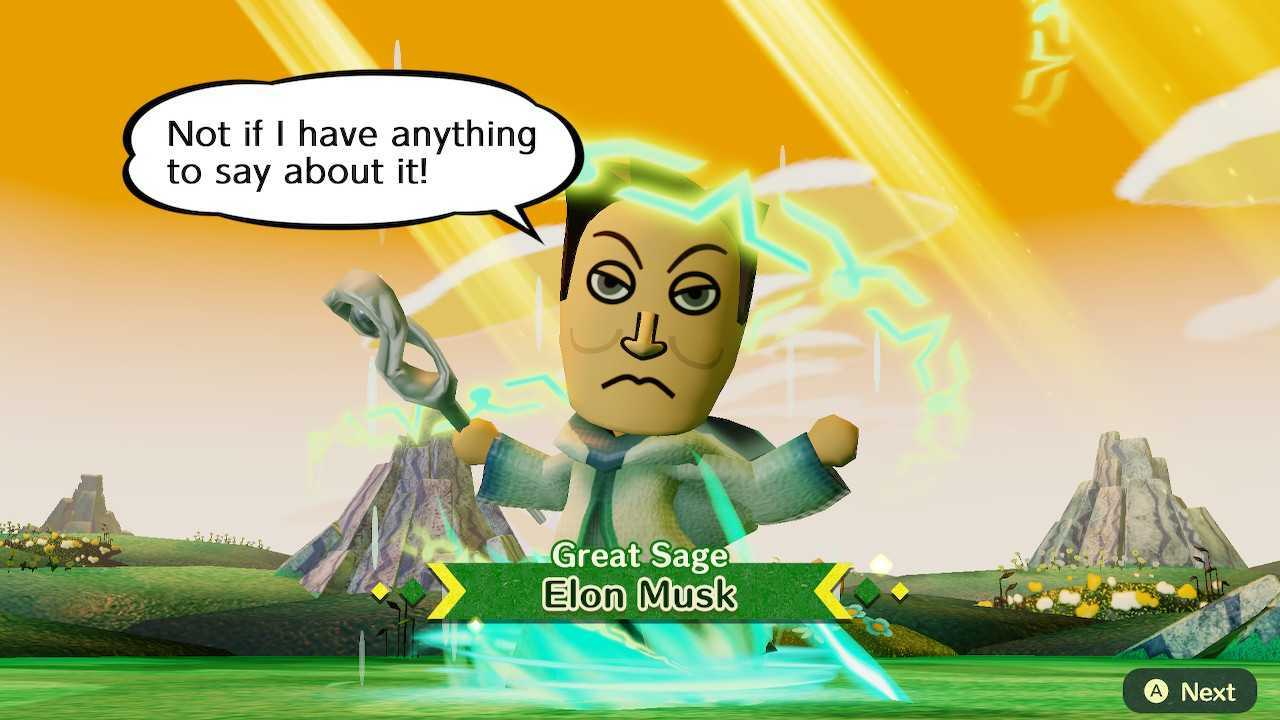
The visual highlights are definitely in the Miis the community have made, there’s nothing stand-out graphically. Towns and stages still look like front-facing dioramas, and textures have a gritty old paper look to evoke old story books. Stones look stonier and burlap looks rougher, but things are as simple as the gameplay.
Miis are noticeably gangly, with longer arms to help emphasize their attacks. Size and thickness don’t seem to carry over from the base Mii editor, but this was likely so attacks could be more obvious on the 3DS. While animation is as serviceable as the textures, the simplicity behind the Miis expressions still working under most faces is a charming surprise.
What is a surprise is the odd performance hit. These come during outings, and usually at moments when its is more than the two player Miis being animated on screen. A third or more Miis and random objects can suddenly cause the frame rate to tank. Something I hope the full game fixes.
What does hit hard is the dynamic and funky music. The overworld and village music are all serviceable, but the battle and boss battle music will drill into your head (especially the latter). It lulls when the player is deciding something in a menu, and gets faster or jerkier if a character is suffering from an emotional status effect such as crying, laughing, or being enraged. Like the rest of the game it’s a small touch that elevates it from average.

If the demo does not win you over, what we know of the original Miitopia means the rest will not impress you. If anything has tickled your interest, then Miitopia is shaping up to be a fun little diversion intended to be enjoyed rather than conquered.
With a little more control in battle and ease of control in the editor, the game could have been elevated to something special. Will there be a dramatic heel-face turn when the game releases? Is there more than what was in the original? We’ll face up to the challenge with the full game.